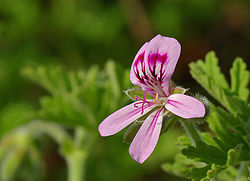I removed the sugar from my sticky cherry tincture using bowls, rock, sun, and, most importantly, plastic wrap. Since the weather has been most foul recently, evaporation and condensation processes have taken a good few weeks. But I now have about 15 ml of tinctured cherry. Yes!
 I've used a 151 proof Everclear for the tincture. 190 proof food grade alcohol is ideal (e.g., 95% alcohol) yet unattainable in California. I've been itching to get my hands on the stronger stuff. If all goes well during these experiments, I intend to buy organic grain or grape alcohol from a farm I'd heard great things about in Portland. Best to experiment with the cheaper stuff first just to get proportions right, etc.
I've used a 151 proof Everclear for the tincture. 190 proof food grade alcohol is ideal (e.g., 95% alcohol) yet unattainable in California. I've been itching to get my hands on the stronger stuff. If all goes well during these experiments, I intend to buy organic grain or grape alcohol from a farm I'd heard great things about in Portland. Best to experiment with the cheaper stuff first just to get proportions right, etc. Back to the tincture. Since I used 151 proof, I am wary that any essential oils I add will cloud my solution, i.e., not dissolve properly. I'm first going to add one drop of peru balsam to a tiny vial. Peru balsam has a lovely spicy vanilla smell I think will make a good base note to compliment the cherries.
 |
| Cherry tincture with bitter orange and peru balsam |
Next I begin adding my tinctured cherries, one drop at a time. As expected, the mixture clouds as soon as the tincture hits the balsam. After nine drops however, things clear up (so far we have a 10% dilution). I add a tenth drop just to keep things simple. Shake. Things stay clear. Whew. At this point, let me just say how important risk taking is in this business. One drop can make a difference between sunshine and clouds. You have to be prepared to lose some to win some. Not to mention, glass vials can be both tiny and slippery. One wrong move and you could have a jasmine scented house for the rest of the year. Not a bad thing, but how easily it could have been oakmoss, which smells like pruney cough syrup in its unblended state.
 |
| No, those aren't fingerprints, the perfume is cloudy. |
So far we have: 1 drop peru balsam, 2 drops bitter orange, 40 drops tincture. I'm going to wait a few days to see how things shake out, so to speak. Hopefully this perfume's future is not clouded, but only time will tell. Ah yes, and how do things smell at this point, you might ask? I uncap and inhale.
Like a walk through a field of orange groves as the first rays of sun turn the air golden. Stay tuned!
To browse our natural perfumery, please visit Mermaid Lane Perfumes.












